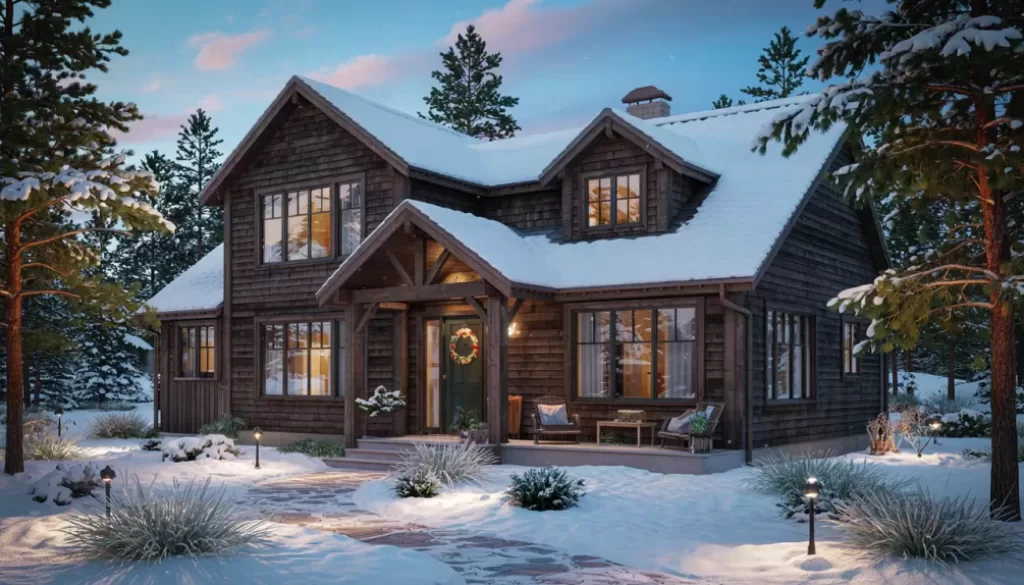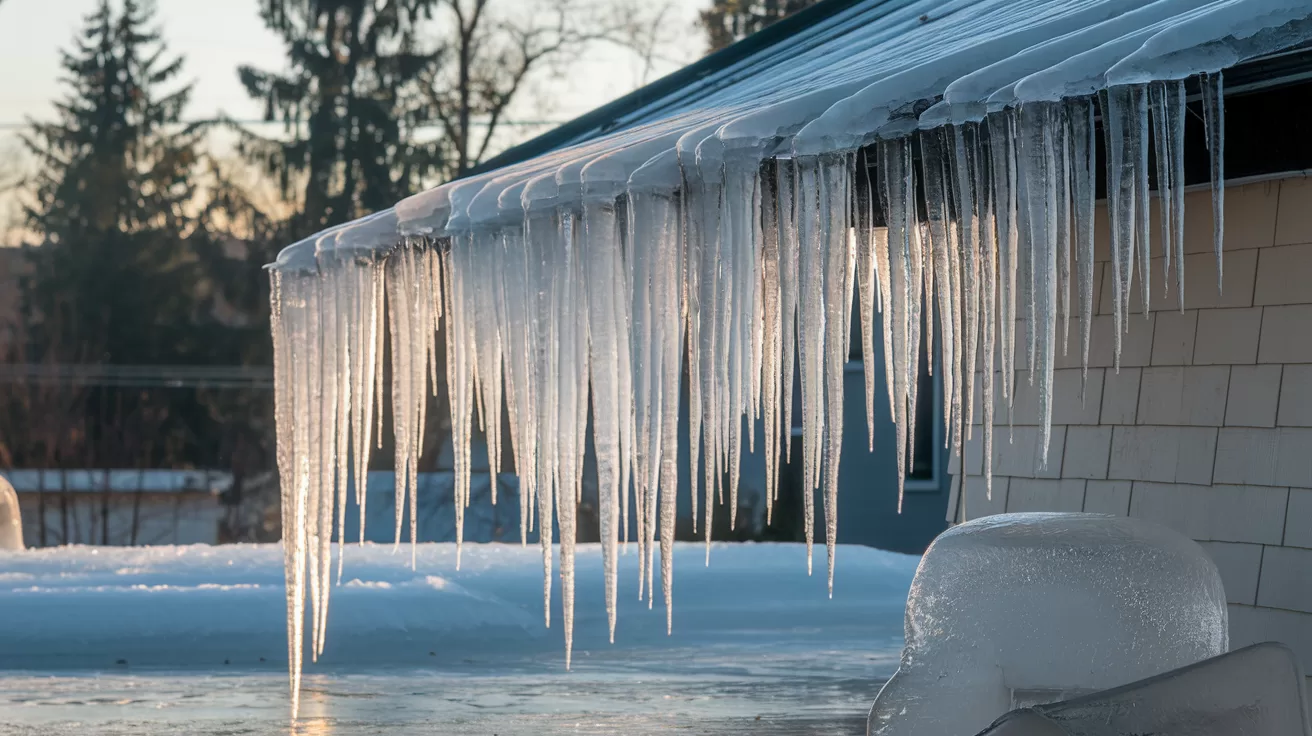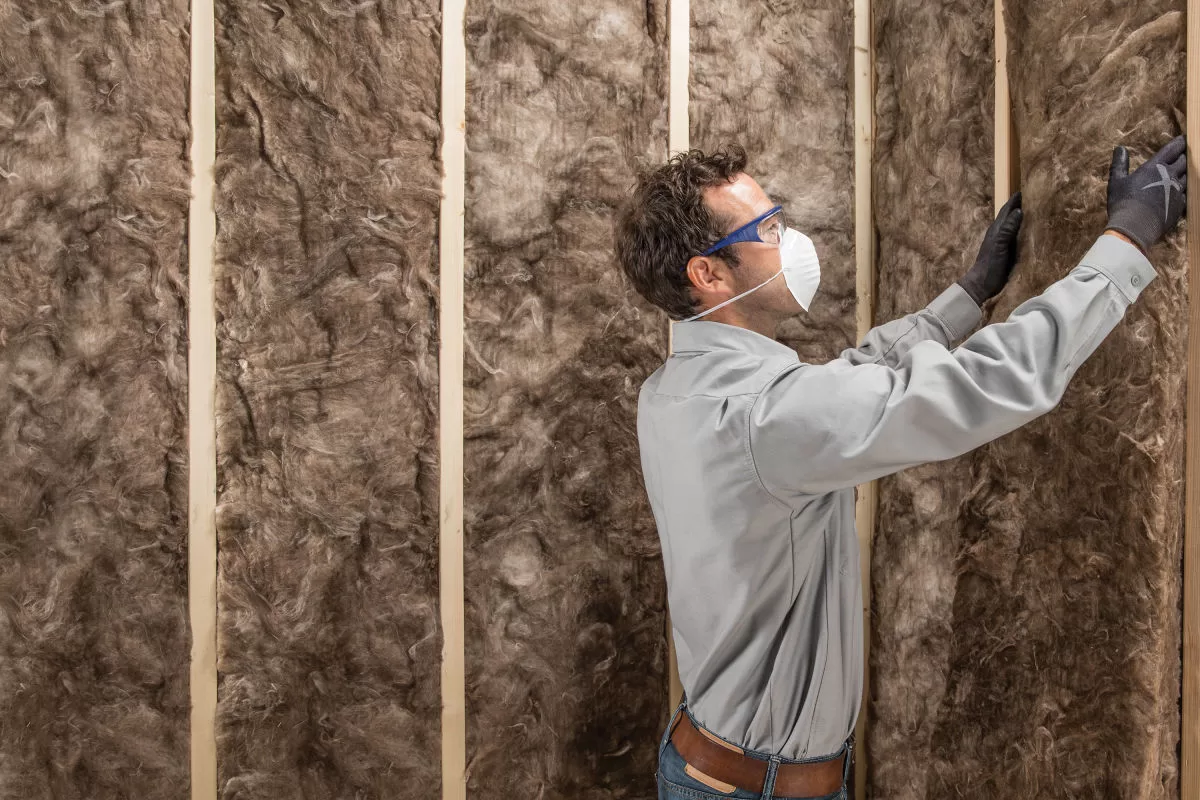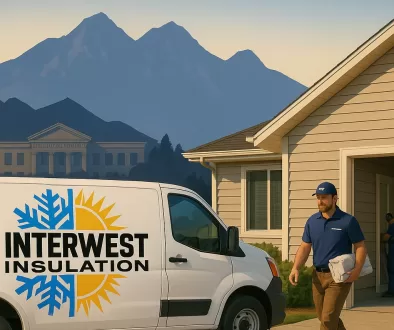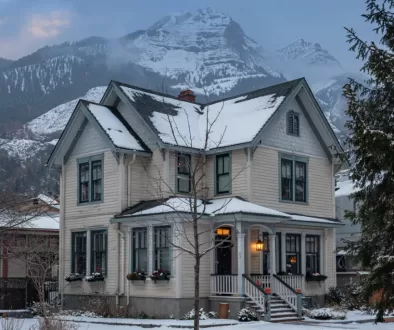How a smarter thermal blanket can put hundreds of dollars back in your pocket—year after year—while keeping your Utah home comfortable in every season
Why Utah Homes Leak Cash Through the Roof
Utah is a study in weather extremes. In July, the asphalt on your driveway can hit 140 °F. Six months later a January inversion can hold daytime highs below freezing. Those swings make heating and cooling the single largest bite of a homeowner’s energy budget—close to half the money you pay Rocky Mountain Power or Dominion Energy every year.
Now, picture the conditioned air inside your home as water in a leaky bucket. No matter how fast you pour more water in (by running your furnace or air-conditioner), it keeps dribbling out through thin attic insulation, hollow rim-joists, and under-filled wall cavities. Most Utah houses built before the early 2000s have R-11 to R-19 in the attic; modern recommendations call for R-49. That means the bucket is missing half its bottom.
A local couple in West Jordan recently told us their gas bill felt like a monthly car payment. We popped into their attic, measured three inches of dusty pink fiberglass, and spotted daylight around electrical penetrations. Their HVAC system wasn’t broken; their insulation was. If that sounds familiar, you’re in the right place.
How Insulation Turns Lost Dollars Into Instant Savings
Let’s get practical: insulation works by trapping pockets of still air, and still air doesn’t conduct heat well. The thicker the blanket—measured by R-value—the slower heat moves. Slow the heat loss in winter and your furnace cycles less often; slow the heat gain in summer and your A/C can finally take a breather.
A Department of Energy field study on homes along the Wasatch Front found that upgrading attic insulation from R-19 to R-49 trimmed heating energy by roughly 18 percent and cooling energy by 11 percent. In dollar terms, that shakes out to $400-$700 a year for a typical 2,000-square-foot rambler. Multiply that by twenty years—the lifespan of cellulose or fiberglass—and you’ve effectively created a five-figure return on a project that might cost a couple grand after rebates.
And that return isn’t theoretical. The West Jordan family? Their January gas bill fell from $230 to $158 the very next cycle after an attic top-off and a Saturday’s worth of air-sealing.
Find Out What Your Home Could Save
Call (801) 471-6525 or Schedule My Audit now to book a free 30-minute attic and thermal scan. We’ll bring an infrared camera, measure your existing R-value, and show you real numbers—no obligations, just answers.
A One-Minute Science Detour
Homeowners sometimes ask whether new windows wouldn’t be the better first step. Windows absolutely matter, but square foot for square foot, glass already performs better than a poorly insulated attic. A double-pane window runs about R-3.5. Three inches of aged fiberglass can sag below R-9. Because your roof’s footprint is so much larger than your window area, adding roof insulation almost always wins first place in bang-for-buck.
Where to Aim First for the Fastest Payback
Utah houses leak heat in predictable places. Picture your home from the roof down:
-
Open Attic Floor – Biggest surface area, most dramatic temperature delta between inside and outside air; quick payback.
-
Rim & Band Joists – Those two-by-twelve cavities at the outer edge of your floor framing are often bare wood. In winter they bleed heat and invite drafts across your ankles.
-
Bonus-Room Knee Walls & Floors Over Garages – If you have a room that’s scorching in July and frigid in January, chances are it sits over an unconditioned space.
-
Older Exterior Walls – Dense-packing cellulose into previously hollow studs can trim another 10 percent off bills, especially in mountain valleys like Heber City or Oakley where winters stretch on.
-
Basement Rim & Slab Edge – Not a headline savings zone, but finishing work in basements goes faster when you aren’t chattering your teeth.
Each of those zones has a best-fit material, but the golden rule is simple: seal air pathways first, then add R-value. Air leakage can undermine even the thickest insulation blanket.
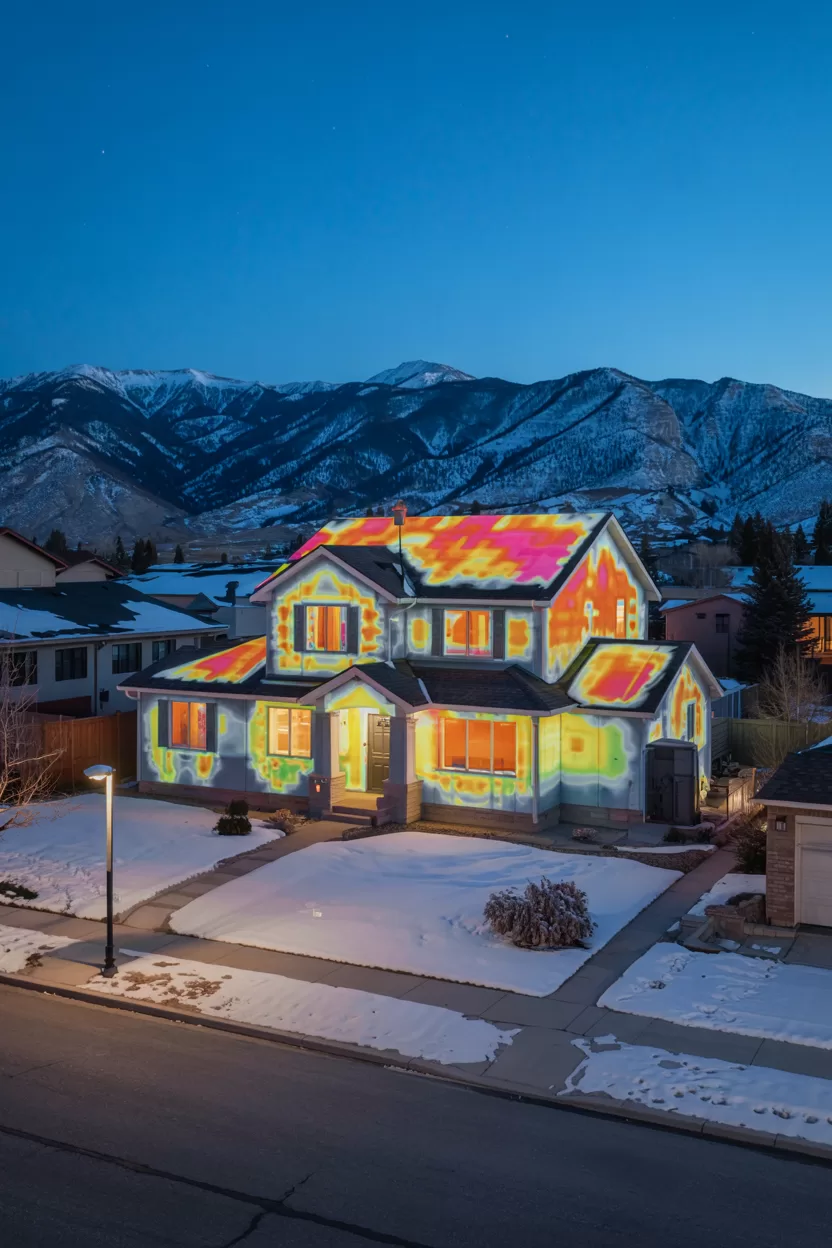
Picking the Right Insulation for Your House (and Budget)
Once we know where the leaks are, the next step is choosing a material that suits the cavity, your timeline, and your wallet. Let me translate the jargon into plain English:
Blown-In Cellulose
Made from recycled newspaper treated with borate to resist fire and critters, cellulose is our go-to for open attics and for “dense-pack” retrofits into empty walls. It settles about ten percent over time, so installers blow extra depth to compensate. Cellulose also does a great job at muffling outside noise—handy if your place backs up to Redwood Road or I-15.
Fiberglass Blow-In
Think cotton candy made of glass. It’s light, resists settling, and offers excellent R-value per dollar in attics where depth isn’t an issue. If you prefer a more familiar brand like Owens Corning, this is your huckleberry.
Fiberglass Batts
Those pre-cut rectangles you’ve seen at Home Depot work fine in open wall studs when you’re remodeling. They’re budget-friendly but require meticulous cuts; an inch-wide gap can slash their effectiveness by a third.
Mineral Wool (Rockwool)
Formed from volcanic rock, mineral wool shrugs off water and won’t burn. It costs more, but for sound-sensitive bedrooms or fire zones near chimneys, it’s the Cadillac.
Closed-Cell Spray Foam
At roughly R-6.5 per inch, this stuff is the insulation equivalent of a down parka. It also acts as an air and vapor barrier, so we save it for rim-joists, cathedral ceilings, or tricky crawlspaces where thickness matters and moisture control is critical. It’s pricey, but it solves three problems in one go.
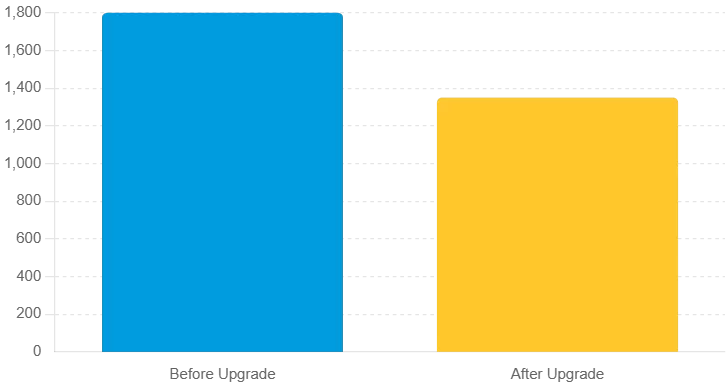 “Side-by-side photo of an attic before and after cellulose blow-in, both taken in Lehi, Utah.”
“Side-by-side photo of an attic before and after cellulose blow-in, both taken in Lehi, Utah.”
What About DIY? A Reality Check
A conscientious homeowner can absolutely top off a small attic over a weekend. Big-box stores loan out high-volume blowers when you buy enough bags of insulation. You’ll need a helper to feed the hopper, a Tyvek suit, a respirator, and the patience to keep the hose moving so you don’t bury joists unevenly.
Where most DIY projects go sideways is the prep work. Air-sealing every light can, drain-pipe chase, and top-plate gap is tedious, sweaty, and more important than the insulation itself. Skip that and you’ll leave 30 percent of the potential savings on the table. Dense-packing walls, spraying closed-cell foam, or filing utility rebate paperwork? Those usually tilt the scales back toward hiring a pro.
If you do tackle an attic yourself, pick a mild weekend in spring or fall—cellulose clumps and fiberglass fibers both behave poorly at extreme temperatures—and budget twice the time you think you’ll need. Oh, and stock up on Advil. Crawling around roof trusses reminds you exactly how many muscles you have.
Prefer to Keep Your Saturday Free?
Skip the Tyvek suit and let our certified crew handle everything—air-sealing, insulation, and full cleanup—often in under four hours. Call (801) 471-6525 or click Schedule My Audit to lock in your date.
Utah-Specific Rebates and Credits You Don’t Want to Miss
Upgrading insulation is already a financial slam-dunk, but it gets sweeter when you tap local incentives:
-
Federal 25C Tax Credit – Claim 30 percent of material costs (labor excluded) up to $1,200 each year through 2032.
-
Rocky Mountain Power Home Energy Savings – Earn $0.25 per square foot when you raise an attic from R-19 or less to R-38 or better.
-
Dominion Energy ThermWise – Gas customers may receive $0.10–$0.30 per square foot for attic or wall upgrades, depending on starting R-value.
-
Utah Home Performance Loan – 1.99 percent financing up to $7,500, paid through your utility bill with no upfront fees.
We file every form, attach photos, and follow the paperwork so you don’t have to hunt for check numbers come tax season.
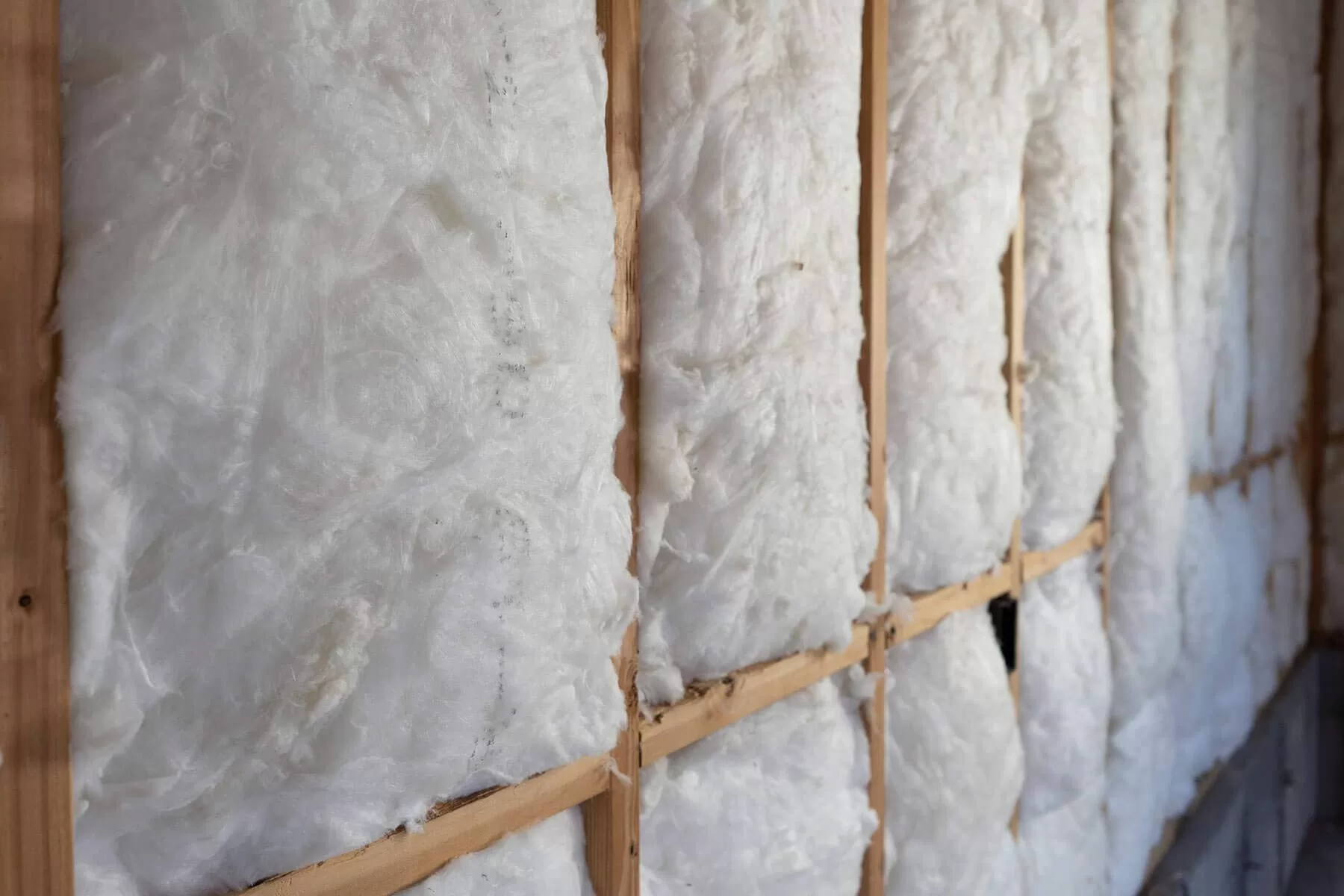
H2: Comfort and Quality-of-Life Bonuses You’ll Feel Immediately
Money isn’t everything—though saving it never hurts. Most families notice three perks in the first week after an upgrade:
-
Even Temperatures from Floor to Ceiling – No more wearing a hoodie upstairs in the morning while the kids downstairs complain it’s too hot.
-
Quieter Rooms – Cellulose and mineral wool dampen traffic noise, barking dogs, and even those fireworks your Draper neighbors love so much in July.
-
Cleaner Air – Fewer drafts mean less dust pulled in through wall gaps, and better humidity control helps fend off mold spores.
A fourth bonus? Equipment longevity. Furnaces and compressors fail from short-cycle stress. By reducing runtime 15-30 percent, you can add years to a $10,000 HVAC system—savings that never show up on your utility bill but definitely matter to your wallet.
Five Signs Your Home Is Begging for an Upgrade
-
You see snow melt channels on your roof while your neighbor’s stays frosty white.
-
Icicles bigger than your fist hang off gutters every winter—that usually means attic heat leaks.
-
Your A/C can’t keep the house below 76 °F once July hits triple digits.
-
You can read the tops of ceiling joists because insulation is level with or below them.
-
You find yourself closing off a bonus room because it’s unusable half the year.
Hit even one of those, and an audit is almost guaranteed to uncover low-hanging fruit.
“Close-up of an icicle-laden gutter on a Salt Lake City home—classic sign of attic heat loss.”
Putting Numbers on Paper—A Quick ROI Example
Let’s crunch something tangible. Suppose you live in a 2,100-square-foot rambler in Bountiful with R-19 attic insulation. An upgrade to R-49 requires roughly 55 bags of cellulose.
-
Material + labor: $2,800
-
Rocky Mountain Power rebate (attic): –$400
-
25C tax credit (30 % of materials): –$320
-
Net cost: $2,080
Energy-tracking apps for similar homes show post-upgrade savings of $520 a year. Divide net cost by annual savings and you’re looking at a four-year payback. And remember, cellulose doesn’t expire; you’ll reap those savings for decades.
If you invested that same $2,080 in index funds at an optimistic 10 percent return, you’d see $208 the first year. Your insulation, on the other hand, returns $520—tax-free. That’s why energy pros call insulation the “sleep-at-night stock.”
“Insulation crew member blowing cellulose in an Alpine home attic, hose in hand, depth marker visible.”
What to Expect on Installation Day
People sometimes picture insulation crews like the Dust Bowl: fibers swirling everywhere. Modern equipment is far cleaner than that. Here’s a typical schedule:
-
Arrival & walk-through – We protect flooring and set plastic at the attic hatch.
-
Air-sealing – A tech hops into the attic with a can of fire-rated foam, sealing plumbing stacks and light cans.
-
Blow-in insulation – Another tech feeds material into the hopper while we distribute an even blanket to the required depth.
-
Final inspection – We photograph depth rulers, replace insulation rulers by the hatch for your records, and vacuum the hallway.
-
Rebate paperwork & R-value certificate – You get a PDF for your files; we submit everything electronically.
From truck door opening to final handshake is often under four hours. Most homeowners keep working at their desk or running errands; we just ask that pets stay clear of the hatch ladder.
Ready to Stop Heating the Great Outdoors?
Give us a ring at (801) 471-6525 or click Schedule My Audit. We serve Salt Lake City, Provo, Park City, Heber, and every neighborhood in between. One free visit, zero pressure, and a warmer (or cooler) home for years to come.
Frequently Asked Questions (Yes, Google—You Can Index These)
Q: Will more insulation make my attic too hot in summer?
A: Actually, proper R-value plus good ventilation keeps attic temperatures lower because heat doesn’t radiate through the ceiling into living spaces.
Q: Does insulation settle and lose effectiveness?
A: Cellulose settles about ten percent in the first year; installers blow extra depth to account for that. Fiberglass blow-in settles far less. Either way, the R-value certificate we leave behind factors in that adjustment.
Q: I’m remodeling—should I wait?
A: If you’re gutting walls, definitely insulate during the remodel. But if the remodel is six months off and the attic is bleeding heat, do the attic now; it won’t affect future wall work.
(FAQ markup is embedded for rich snippets so Google may feature these answers directly in search results.)
Wrap-Up—Your Next Move
Insulation isn’t glamorous. You can’t show it off at a backyard barbecue. Yet few upgrades offer a faster, safer, more reliable return on investment. When you tally lower monthly bills, steadier indoor temperatures, a quieter house, and longer furnace life, the math becomes irresistible.
Utah’s climate isn’t getting any milder, and energy costs rarely retreat. Every month you delay is another month you pay utility companies more than you need to.
So why wait?
A no-cost audit, a same-day quote, and professional installation could have you saving before the next meter reading.
Give us a ring at (801) 471-6525 or click Schedule My Audit, sleep warmer tonight, and save money for years to come.
,080
Energy-tracking apps for similar homes show post-upgrade savings of 0 a year. Divide net cost by annual savings and you’re looking at a four-year payback. And remember, cellulose doesn’t expire; you’ll reap those savings for decades.
If you invested that same ,080 in index funds at an optimistic 10 percent return, you’d see 8 the first year. Your insulation, on the other hand, returns 0—tax-free. That’s why energy pros call insulation the “sleep-at-night stock.”
“Insulation crew member blowing cellulose in an Alpine home attic, hose in hand, depth marker visible.”
What to Expect on Installation Day
People sometimes picture insulation crews like the Dust Bowl: fibers swirling everywhere. Modern equipment is far cleaner than that. Here’s a typical schedule:
-
Arrival & walk-through – We protect flooring and set plastic at the attic hatch.
-
Air-sealing – A tech hops into the attic with a can of fire-rated foam, sealing plumbing stacks and light cans.
-
Blow-in insulation – Another tech feeds material into the hopper while we distribute an even blanket to the required depth.
-
Final inspection – We photograph depth rulers, replace insulation rulers by the hatch for your records, and vacuum the hallway.
-
Rebate paperwork & R-value certificate – You get a PDF for your files; we submit everything electronically.
From truck door opening to final handshake is often under four hours. Most homeowners keep working at their desk or running errands; we just ask that pets stay clear of the hatch ladder.
Ready to Stop Heating the Great Outdoors?
Give us a ring at (801) 471-6525 or click Schedule My Audit. We serve Salt Lake City, Provo, Park City, Heber, and every neighborhood in between. One free visit, zero pressure, and a warmer (or cooler) home for years to come.
Frequently Asked Questions (Yes, Google—You Can Index These)
Q: Will more insulation make my attic too hot in summer?
A: Actually, proper R-value plus good ventilation keeps attic temperatures lower because heat doesn’t radiate through the ceiling into living spaces.
Q: Does insulation settle and lose effectiveness?
A: Cellulose settles about ten percent in the first year; installers blow extra depth to account for that. Fiberglass blow-in settles far less. Either way, the R-value certificate we leave behind factors in that adjustment.
Q: I’m remodeling—should I wait?
A: If you’re gutting walls, definitely insulate during the remodel. But if the remodel is six months off and the attic is bleeding heat, do the attic now; it won’t affect future wall work.
(FAQ markup is embedded for rich snippets so Google may feature these answers directly in search results.)
Wrap-Up—Your Next Move
Insulation isn’t glamorous. You can’t show it off at a backyard barbecue. Yet few upgrades offer a faster, safer, more reliable return on investment. When you tally lower monthly bills, steadier indoor temperatures, a quieter house, and longer furnace life, the math becomes irresistible.
Utah’s climate isn’t getting any milder, and energy costs rarely retreat. Every month you delay is another month you pay utility companies more than you need to.
So why wait?
A no-cost audit, a same-day quote, and professional installation could have you saving before the next meter reading.
Give us a ring at (801) 471-6525 or click Schedule My Audit, sleep warmer tonight, and save money for years to come.
